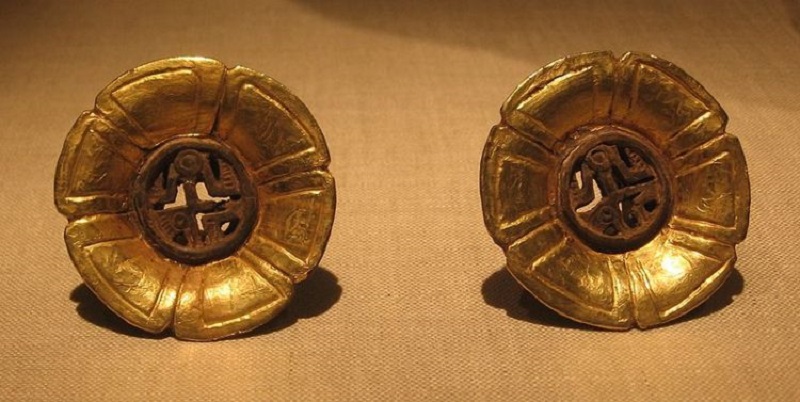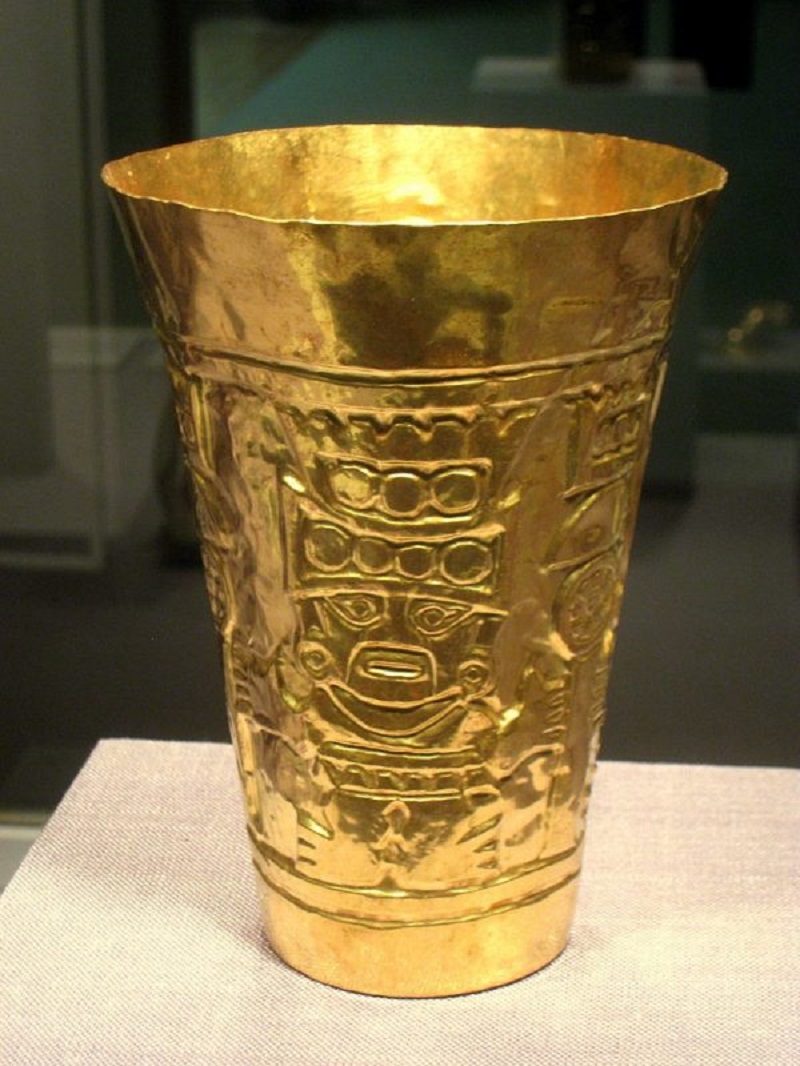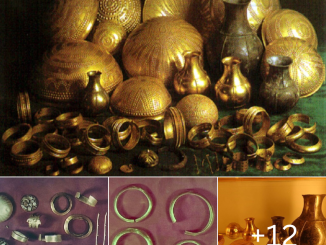For the Aztecs and many other groups in ancient America, gold held both symbolic and spiritual meaning in society. In fact, the word for gold in Nahuatl, the dialect of the Aztecs in Mexico, is teocuitlatl which means excrement of the gods.
Gold is also strongly associated with leadership, power, status and wealth. The mighty Emperor of the Aztecs, whose 16th-century kingdom stretched from the Pacific Ocean to the Gulf of Mexico, held sole control over the mines and goldworks within his territory.
The Aztecs and the importance of gold
Only the Emperor was qualified to regularly give gifts of gold to regional rulers to maintain peace and to brave soldiers defending the territory.
Despite the religious leadership and symbolism associated with gold among the Aztecs, this precious metal only became useful to individuals when crafted into jewelry or some other spiritual image.
The main use of gold in ancient Aztec society was for personal adornment. Many of the pieces are unmistakable jewelry although some are encapsulated in elaborate religious iconography.
The second essential use of precious metals is for funerary purposes, to honor productive members of society and recognize their status even in death. Offering gold items to the gods was also a typical Aztec custom.
Using gold for normal crafting is uncommon; however, the Aztec Emperors after the tenth century produced large numbers of them thanks to better access to gold mines and improved gold-working techniques. Gold is also an important part of royal home decorations.
In fact, many early explorers discovered entire rooms of the illustrious royal residences of the Aztecs decorated with gold and silver.
Their source of gold
Aztec gold originated from the regions of Oaxaca and Guerrero that were under the control of the Aztecs. Raw gold was imported in the form of dust and ingots into the Aztec kingdom. In addition, the rulers of these areas also gave gifts of gold to the Aztec Emperor as a token of gratitude. In fact, at that time, goldsmiths from Oaxaca often came to the Aztec capital to work as goldsmiths.
By the late 15th century, when European powers such as Spain arrived in the Americas, gold was mined in an area extending south from present-day Mexico to Northern Argentina, Bolivia, and central Chile.
It is believed that gold mining began in the Peruvian highlands thousands of years ago. Information about gold mining and its operations then spread north to areas including present-day Ecuador, Colombia, Panama and Costa Rica around the second century AD and to Mexico in the fifth century AD. ripe.
Conquered territory means more gold
The Aztecs migrated from the North before conquering Mexico, where they established a powerful empire that was destroyed by the arrival of Spanish colonists in the 15th century. successful, the Aztecs had more gold and were of superior “quality” than most other communities and kingdoms in the surrounding areas.
It is believed that they took most of the gold from the areas they occupied and traded some of it for other goods they produced.
During their migration south, it is also believed that the Aztecs originated in or passed through regions where gold, silver and copper could be found in large quantities and where the indigenous inhabitants did not value precious metals . If the Aztecs had lived in such areas long enough to build a complex and sophisticated society, they probably would have known where to find gold and most probably would have mined it. huge quantities they carried south.
On the other hand, if the origins of the Aztecs were further north, they may have forged strong connections with some communities that knew where gold mines were found. They may also have assimilated communities such as the Anasazi, Mimbres, Mogollon, and Hohokam during their migration and persuaded them to join the journey south.
Regardless, given that the Aztecs originated from the north, they may have been in a better position to know the areas where gold could be found in the North, where the local Toltecs and neighboring tribes Others don’t know.
Mining method used by the Aztecs
The Aztecs used many different methods to mine gold. The most common method is placer mining, in which sand from the river bed is washed away in a special container, causing gold particles (of higher density) to settle to the bottom. This was the most common way people around the world recovered gold, and the early Aztecs were no exception.
This method was mainly used in rivers in areas located in present-day Oaxaca, Guerrero and Michoacan. The Aztecs used the power of flowing water to wash gold from sand and river rocks.





